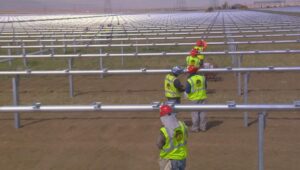 (888) 895-1776
(888) 895-1776
 Garrett Hourigan
Garrett Hourigan  May 28, 2024
May 28, 2024  0 Comment
0 Comment 
As the number of solar projects across the country continues to grow, one question many landowners have is “Why do solar projects take so long to break ground?” While the answer to this question can vary, there are a few common procedures affecting most if not all solar projects. Let’s take a more in depth look at specific factors affecting the solar project timeline:
Permitting & Regulatory Process
All proposed construction must go through a review process in order to make sure the project complies with all local building and planning codes and ordinances. Oftentimes this process of getting building or planning permits can be long and tedious. An average timeline for the approval process can take anywhere from months to years. On top of this states such as California and New York are known to have stricter building codes and development regulations, making this process even longer. Some of the most common reasons for a prolonged approval process include incorrect or incomplete applications, planning departments lack of funding or staff, and backlog of permit filings due to a short term increase in applications.
Environmental and Site Assessments
Another reason many solar projects get delayed is due to environmental and site assessments. Before breaking ground for a project, many jurisdictions require an environmental impact assessment or EIA in order to test factors such as air quality, water resources, soil and vegetation, wildlife habitats, noise level, and visual impact. If any of these factors are negatively impacted, the project may face a roadblock and have to adjust its planning.
Grid Connection and Interconnection
Perhaps the most common cause of delay to any solar project is grid interconnection. This process begins with an application but must be thoroughly reviewed by the utility companies before the application can be approved. The technical intricacies behind interconnection make for even greater wait times as grid capacity constraints and stability issues must be closely managed. On top of this, widespread adoption of renewable energy projects has created an interconnection backlog as new projects submit applications everyday. Between 2022 and 2023 the total capacity of energy projects in the US interconnection queues grew 40% year over year. Furthermore, the average project completed in 2022 spent five years in the interconnection queue waiting for approval. Long wait times and technical issues due to grid constraints are the main reasons why interconnection is widely regarded as the number one barrier to solar deployment. While there is no shortcut to the interconnection process, it is important to plan out a potential timeline for your project and keep in mind wait times are likely to increase until grid infrastructure improves.
Community Engagement Issues
Another common delay to solar development stems from community engagement issues. Projects in populated areas or with productive agricultural land may especially run into community issues with the project’s visual impact or the potential for land-use conflicts. Community members may feel these factors are affecting their property values and protest to local or state government officials. Early community outreach as well as ongoing transparency are two of the best ways to mitigate community engagement issues. Educating local communities about the benefits to solar energy and other renewable energy sources is another great way to foster engagement from surrounding communities.
Overall, there are many potential roadblocks when it comes to breaking ground on a solar development project. While this process often takes years, proper planning and effective community outreach can streamline the process.